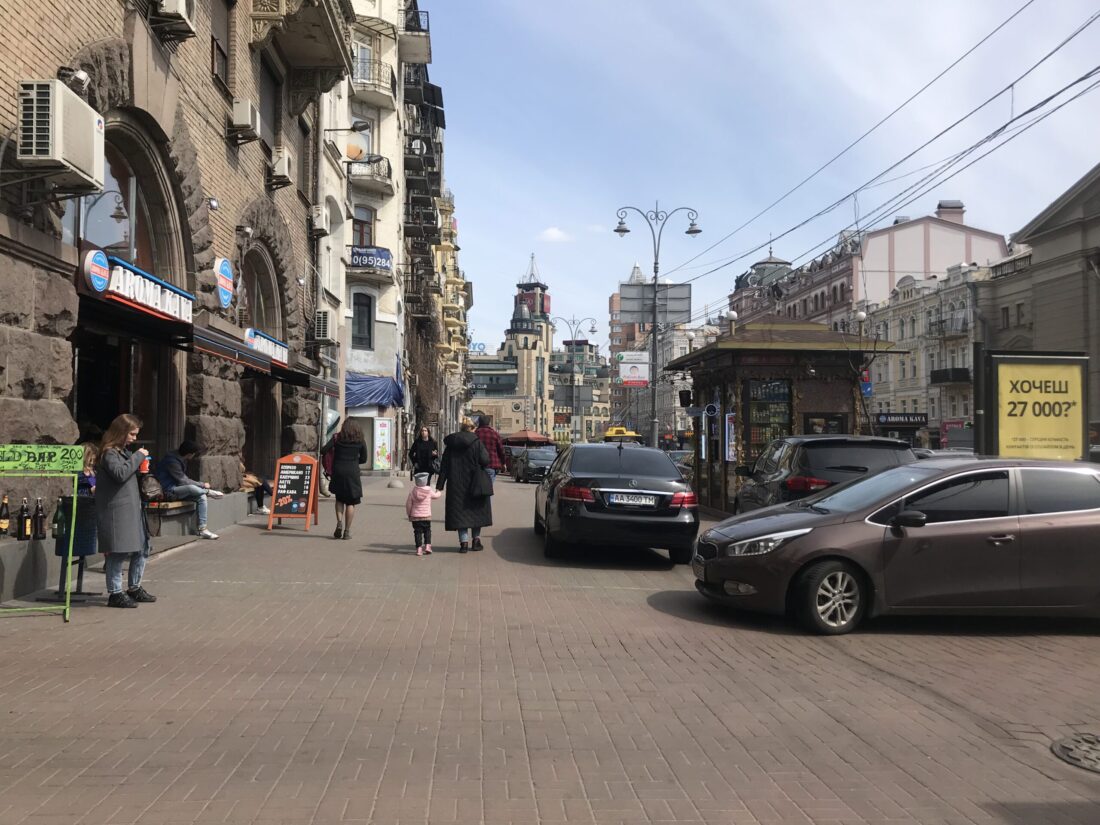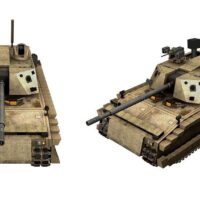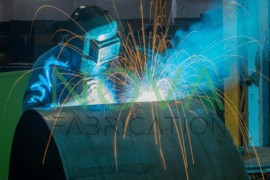On the 3rd installment of “How to Network with HW enginerds in Europe,” we fly to Kiev, Ukraine! (AKA Kyiv, Ukraine.) I only had two days in this city but managed to tour three facilities and pack in four meetings, proving Ukrainians are awesome. In this short visit, I learned a lot of interesting facts about the challenges and perks of hardware development in Ukraine, which I’ll share here.
How To Find HW Nerds Abroad
Like my visit to Berlin and Warsaw, this trip was another Master’s Class in networking. Thank you again to Hardware Massive, who made the fantastic introduction for me to the HW accelerator, Concepter! Plus, their other introduction to Marta Proska, COO of Arkley in Warsaw, in turn, led to another kind intro: to Roman Kravchenko of DIY Lab and IoT Hub. Thanks, Marta!
I’d also like to thank all the HW pros in Kiev who fit me in their busy schedule… some with little to no notice! Like the meetings in Poland, I was astonished by how willing these important and busy people were to find a way to meet. Have I mentioned how awesome Ukrainians are?
Video with Fabricator Fablab, Concepter, DIY Lab, and IoT Hub
To see some of the highlights from this trip, watch the video below. Included is a tour of the fablab called Fabricator inside UNIT.City.
Getting Around – Holy Crap It’s So Cheap
In my surprise, whirlwind tour of Europe, I didn’t have all my travel and accommodations planned out beforehand. In fact, it was only the day before I arrived in Kiev that I took a serious look at how to get from the airport to the bed I booked.
Usually, I go for public transportation whenever possible. I sat down with good old Google Maps and tried to decipher all the jibberish letters before my eyes. Eventually, I found some possible bus-and-train combinations that would get me close enough after an hour+ of hopping around. Then, I looked up the exchange rate to calculate the cost.
At the time, the exchange rate was 26 whatsits (Ukraine Hryvnia) to 1 USD. TWENTY-SIX?!
Uber for the Win
Wait a minute, do they have Uber in Kiev?
Me, to myself, a day before arriving in Kiev
OH YES, THEY DO. Then I pulled up Uber to figure out the cost of a ride from the airport. It was something like 4 bucks. “HAHAHA. Ok, this task is done,” I said to myself. It was a load-off knowing I wouldn’t need to meticulously plan the rest of my transportation, either.
This exchange rate wildly in favor of the US dollar made a big impact on how much I was able to fit in on my little trip. Of course, it also turned out to be a big factor influencing how HW startups there interact with the rest of the world…and future potentials for industries there.
Visiting the HW Accelerator: Concepter
My first not-Borscht stop was Concepter, a hardware accelerator inside UNIT.City, an innovation park.
UNIT.City
This campus is touted as Ukraine’s first innovation park and one of the largest innovation centers in Eastern Europe. It was once the abandoned Kyiv Motorcycle Factory but then was refurbished to become a mini tech hub 3 years ago. There’s a lot going on here now! There’s a kind of vocational school for IT, plus research labs, startup offices, and the fablab called, “Fabricator,” which we toured in the video.
How to Get In — The Magic Word
Finding Concepter in this maze of close to 60 acres, was not an easy task! My not-English speaking Uber driver pulled up to the uniformed guard at the start of the labyrinth. The guard shouted some stuff. The driver pointed to me. The guard bent over to make some serious, squinty eye contact with me. I smiled, shrugged my shoulders and asked, “uhh…English?”
Then the guard laughed, stood upright and waved us through. The driver laughed. I laughed. We all had a good laugh. Pro tip: if you’re trying to get into a secured area in Ukraine, the magic word is, “English”. You’re welcome.
Google Maps narrowed down my destination to one of a cluster of 4 buildings. Then, after several wrong turns, pestering a few strangers and a couple of WhatsApp phone calls, I finally got to my destination. Turns out Ukraine, like Poland, is not so big on signage and directions.
Inside Concepter
Once I made it, I was fortunate to chat with a few Concepter employees, including 2 engineers. This hardware accelerator provides startups with both a cash boost of seed funding and can bring a lot of the heavy lifting of product development and scaling manufacturing. They also invent and build their own gadgets! Luckily, right below them is a fablab they have access to, which makes development a lot easier and less expensive.
Tour of the FabLab Fabricator

Andrii Prepiialo, senior mechanical design engineer at Concepter, was our extraordinary tour guide in the video. He spends a lot of time there making things for Concepter, so he knew his way around.
Here’s the video again if you missed it above:
This wasn’t the most gigantic fablab I’ve ever walked through, but it still managed to have an impressive spread of tools. It also ranks high as being one of the cleanest I’ve seen. Plus it has at least one surprising feature: a ceramic 3D printer they made themselves.

As with traditional ceramic parts, these are left to dry after forming and then baked.
Here’s that ceramic 3D printer in action:

Concepter Products on Display in Fabricator
Prepiialo showed us some projects Concepter helped with which were on display at the fablab. One was a wearable, non-invasive EKG by Cardiomo that measures heart activity through electrodes embedded in the device below.

Another example of Concepter engineering in the showcase was Petcube. There are a few versions of this available now and they all let you mess with your pet when you’re not at home. Some have a laser to play with your cat, or a camera, mic and speaker combo to talk to your dog. We’re told a newer version even gives treats! These are available to purchase on Amazon now.

Coffee Talk with Sergei Shcherbakov
Up until earlier this year, Sergei Shcherbakov was CTO of Concepter, and he is now Product Manager at Ring Ukraine. The fellas at Concepter knew I was interested in learning about the HW startup culture in Ukraine and they arranged for me to meet Shcherbakov as “THE MAN you need to talk to about that”.
Sending Sergei a “Telegram”
Shcherbakov agreed to a last-minute meeting with me, and I was to meet him near Ring in downtown Kiev. I was honored such an important, busy dude would squeeze in time for “random American engineer” into his packed schedule. Our Concepter friend, Andrii Prepiialo, wanted to make sure Shcherbakov got the message about when exactly I’d be arriving to up my chances of meeting The Man.
I’ll send him a Telegram.
– a not joking Andrii Prepiialo
My face must have said, “you’ll what, excuse me?” Prepiialo smiled and explained that Telegram was the name of a popular communication app there. It’s more common than WhatsApp.
Did you think I meant an actual telelgram?”
– a laughing Andrii Prepiialo
“Yeah, man, I really did. I have zero expectations about this country. Have you seen your elevators?” For reference, this is the elevator where I stayed:


In addition to Telegram, Ukrainians use Facebook for business, like the Polish do (as mentioned in the article on Warsaw, Poland). The guys I met here were the final straws to break down my Facebook fortress of privacy settings. After this country, I caved and let the Ukrainians in, and the Poles, too. FINE, you all win.
The Journey to Ring
When I heard back from Sergei Shcherbakov, he directed me to have the driver drop me some blocks from Ring’s HQ because the streets were blocked off because of protestors. You know, as happens.
My visit was shortly before the presidential election which was sparking fiercely passionate debates — both between the candidates and citizens. That’s what all the hubbub was about that I needed to navigate around.
Learning from “The Man”: Sergei
Shcherbakov made it clear that he would not be allowed to speak at all about Ring. While I would have gladly listened, that was OK, because I was trying to learn generally about how building a HW startup worked in Ukraine. This worldly guy really was the right person to speak to on this.
He’d overseen the development of a lot of HW projects at Concepter. He understood startup culture in the US. He’d worked closely with plenty of Asian manufacturers. (We shared some epic battle wound stories from working with Chinese manufacturers, as all HW veterans have). He had experience, but more importantly, he had valuable perspective.
So what are Ukraine’s advantages and disadvantages in the HW startup world which Shcherbakov and I bounced around in our convo? (These aren’t solely Sergei’s opinions, they’re the points that gelled in my head when we spoke months back. So if anything is objectionable here, I’m sure it’s totally my fault and from my brain, and I’m sorry.)
Advantages to Developing HW in Ukraine
- HAVE YOU SEEN HOW CHEAP IT IS? (“Yeah, Sergei, I’ve been taking an Uber Everywhere, like I’m friggin royalty!”) aka US dollars/Euros/Pounds Sterling go ridiculously far there.
- Educated, talented workforce whose English is pretty great comparatively speaking
- So, so cheap. Did I mention that?
- Lots of infrastructure and manufacturing talent remaining from industrial glory days
- So much potential!
- The disadvantages of Other countries (i.e. if/when Chinese manufacturing becomes undesirable or obstructed, or when Poland develops to the point it’s no longer cheap enough to manufacture there, Ukraine will be there to Make The Things.)
- Woah, Ukrainians are so amazingly friendly and willing to collaborate (this one was all my observation and is, perhaps, skewed).
Obstacles to Work Around
- Walking past the noise of protestors and sirens, it was hard to deny there is still some political instability
- Compared to the US, there isn’t such a high percentage of rabidly entrepreneurial spirits born into the Ukrainian population (but really, where else is there?)
- While Ukraine is a developed nation, there isn’t high tech machinery at all corners of the country (ahem, like the elevator where I stayed)
DIY Lab and IoT Hub
After my short meeting with Shcherbakov ended, I decided to make the trek to the other side of town to visit DIY Lab. I’d been trying to set up a last-minute meeting with Roman Kravchenko, a founder of IoT Hub, but didn’t have a time arranged. I decided just to show up at the affiliated DIY Lab and cross my fingers because it was my last day in Ukraine.
Venturing East to the Left Bank
My new Concepter friends gasped when they heard I was crossing the river. “Are you sure?”
That freaked me out at first but then they explained that it’s just known for being more residential than commercial on the East Side. East of the river is kind of like the Oakland part of the SF Bay area. I guess like Oakland, rent is probably cheaper there.

As with Concepter, I wasn’t precisely sure where the heck I was going when looking for the DIY Lab. I wandered around this creepy-looking industrial park until I spotted a gathering of cool Euro-hipsters.

Luckily, the hipsters were indeed marking the spot I needed to find, and I was saved!
I stumbled into the lobby and asked reception about DIY Lab. Luckily, a founder of DIY Lab, Євгеній Лютак, happened to be walking by. He overheard me and kindly invited me up to check out the facility. (I told you these Ukrainians are beyond awesome, didn’t I?!)
Євгеній Лютак, Evgeny Gnatyuk, and Станіслав Джеріхов graciously made time for my intrusive visit and explained their organizations and some of the projects they ushered through.
Two Orgs, One Master Plan
DIY Lab and IoT Hub are affiliated with each other in a very clever way. DIY Lab is set up as a non-profit community where members are expected to actively work on HW projects themselves as the “DIY” part implies.
Their first focus is to build a cohesive community. Members are encouraged to socialize through the parties DIY Lab holds (brilliant), and find others to fill in their talent gaps. This nonprofit serves as a low-risk playground to watch both projects and teams develop. With this model, my hosts are given an up-close look at the progress of the hardware, the team members as a unit, and the technical and soft skills of individuals. All that info can aid in some serious vetting! Or, at the very least, it can help identify weak points which the org leaders can patch up before they become deal-breakers.
One potential result of being a part of DIY Lab is to pitch your project and be accepted into IoT Hub‘s accelerator. Ahh, and now it all makes sense.
Aside from the sheer cleverness of the master plan, I was in awe of what I’ll call their “HW Startup cultural awareness”. They are keenly aware of the importance of a strong HW nerd community in building successful startups. They are also aware Kiev doesn’t come with a ready-made one of those like San Francisco does. So they’re…engineering one. Wow.
The Results – Projects!
These guys showed off some of the projects in their portfolio. One of the most awesome ones is FeelVR, which makes realistic game controllers for driving simulations. Right now, they have a steering wheel and set of pedals available to order on Indiegogo. I’m told it ratchets-up the sensation of being in a car during the game exponentially.

Another favorite project they showed off is on DIYLab’s site: Wow Ads. The idea is like when you see airplanes or blimps with streamers or displays advertising stuff or saying, “Ramona will you marry me,” or whatever, except with DRONES! I was like, “guys this has drones AND photonics stuff, why didn’t you show me this first!?” I was told this was one of Євгеній Лютак’s own babies.

Before I left, the gentlemen at DIY Lab helped me get in touch with the elusive Roman Kravchenko. Roman offered to meet me downtown late in the evening when he was finished with his 800th other meeting that day.
Me: “What, for real?! You would do that? OK!” Gosh, these Ukrainians. So amazing!
When I met Kravchenko, he suggested we walk around the area to give me a chance to see more of Kiev before I left. How thoughtful! As we walked and talked, military vehicles and the occasional siren blared past. The protests were still going on.

Earlier in his career, Kravchenko stayed for a spell in Silicon Valley, so he had a good idea of the culture there. He was also well aware of the cultural component to successful HW startups. Kravchenko shared some of the many experiments they tried to foster community, entrepreneurial mindsets, and network growth. I won’t share those here, because I’m not sure which are cool to publicize, but I will say I was seriously impressed. Their ideas were pretty wild and creative, and they followed through with them.
Startups within Startups
Above all, I was impressed that Roman Kravchenko and his colleagues view their DIY Lab and IoT Hub organizations as kinds of startups themselves. These guys are aware of the advantages and weaknesses of HW dev in Ukraine versus USA and the rest of Europe. They also continually birth new, creative ideas based on that awareness and try them out. Ideation, execution, tweak, pivot, expand, rinse, repeat…
Keep Your Eyes Out
I’m excited to see what tech will come from Ukraine in the future! There’s a mountain of potential there and a lot of clever, motivated engineers finding ways to mine it. And also…they’re awesome.







